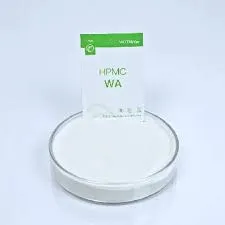
Dec . 20, 2024 10:58 Back to list
redispersible polymer powder rdp
Understanding Redispersible Polymer Powders (RDP) A Comprehensive Overview
In the realm of modern construction and building materials, redispersible polymer powders (RDP) have gained substantial recognition for their versatile applications and significant benefits. These powdery substances, derived from high-performance polymers, have transformed the way we approach construction, adhesive formulations, mortars, coatings, and other formulations in the industry.
What are Redispersible Polymer Powders?
Redispersible polymer powders are fine particles obtained through the spray-drying of aqueous polymer dispersions. They are specifically designed to be redispersed into water, forming a stable polymer emulsion. The key feature of RDPs is their ability to significantly enhance the properties of construction materials upon rehydration, which makes them an invaluable resource in the formulation of dry mixes such as tile adhesives, renderings, and repair mortars.
Key Benefits of RDPs
1. Improved Adhesion RDPs enhance the adhesion properties of cementitious materials, allowing for stronger bonding to various substrates. This is especially crucial in applications like tile adhesive, where maximizing bond strength determines the longevity and durability of installations.
2. Flexibility and Workability The inclusion of RDPs within a formulation increases the flexibility of the cured material. For instance, in tile adhesive applications, this flexibility helps accommodate slight movements due to thermal expansion or settling, thereby reducing the risk of cracking.
3. Water Resistance RDPs contribute to the water resistance of mortars and coatings. This characteristic is key for outdoor applications or areas prone to moisture exposure, as it helps stop water ingress and prolongs the lifespan of structures.
redispersible polymer powder rdp

5. Easier Application The addition of RDPs improves the workability of mortar mixtures, ensuring they are easier to spread, apply, and finish. This can lead to faster application times, saving labor costs and enhancing productivity on construction sites.
Applications of RDPs
RDPs are used extensively in various construction applications. Some of the most common uses include
- Tile Adhesives RDPs are a staple in both interior and exterior tile adhesives, providing excellent bonding and flexibility. - Render and Plaster Incorporating RDPs in render and plaster helps improve cohesion and water resistance, essential for performance in different environmental conditions. - Repair Mortars RDPs are used in repair mortars where enhanced adhesion and durability are required to address structural damage effectively. - Dry Mix Products Beyond traditional construction, RDPs are utilized in a variety of dry mix products, ranging from skim coats to insulating systems.
Conclusion
Redispersible polymer powders represent a significant advancement in construction materials technology. Their unique properties allow for enhanced performance characteristics in a variety of applications, leading to stronger, more durable, and long-lasting building solutions. By understanding and utilizing RDPs, manufacturers and construction professionals can greatly improve the quality and reliability of their products, addressing the increasing demands of modern construction practices. As innovation in materials science continues, RDPs are likely to play an even more crucial role in shaping the future of construction.
-
Versatile Hpmc Uses in Different Industries
NewsJun.19,2025
-
Redispersible Powder's Role in Enhancing Durability of Construction Products
NewsJun.19,2025
-
Hydroxyethyl Cellulose Applications Driving Green Industrial Processes
NewsJun.19,2025
-
Exploring Different Redispersible Polymer Powder
NewsJun.19,2025
-
Choosing the Right Mortar Bonding Agent
NewsJun.19,2025
-
Applications and Significance of China Hpmc in Modern Industries
NewsJun.19,2025







